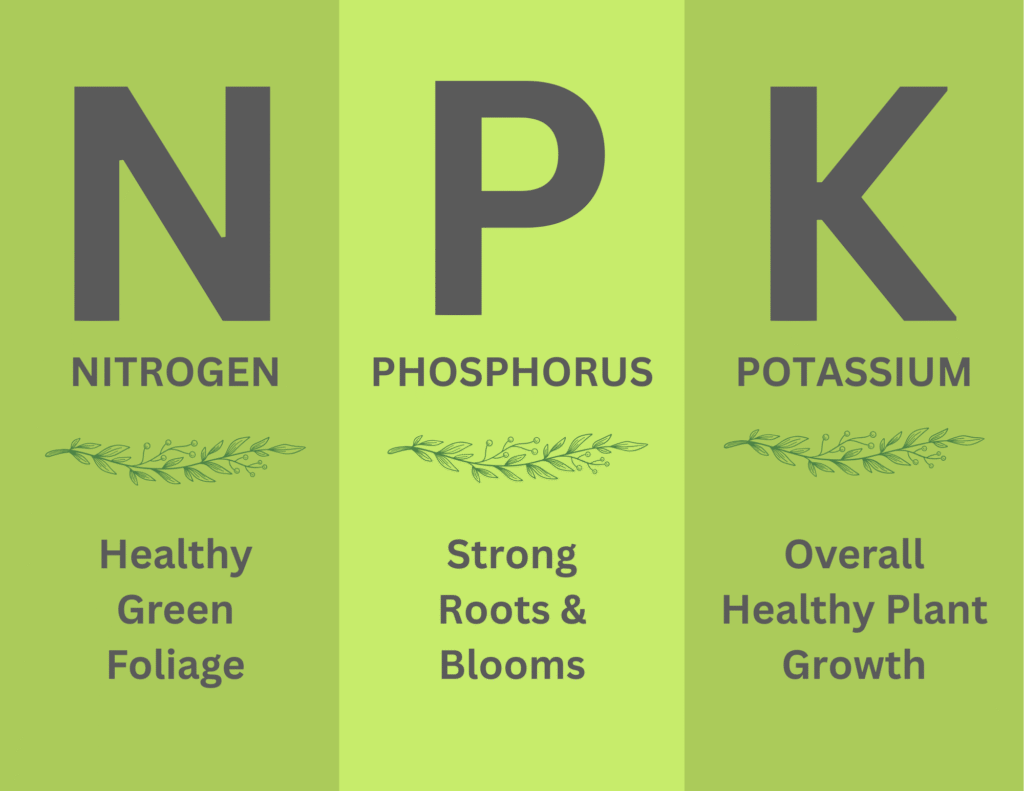Plant Food for Thought: When to Fertilize
Plant food is important to the health of any plant, but it can be confusing trying to figure out which fertilizer to use and when. To start, there are fertilizers for anything and everything. Here are some of the basics.
Granular vs Water Soluble

Granular fertilizers come in the form of small pellets that are meant to be sprinkled onto the soil of the plant. Granular fertilizer is considered a slow release fertilizer and only needs to be reapplied roughly once every 1-2 months. Granular fertilizer should be applied to the soil before watering. This is done because the water activates the release of the fertilizer from the fertilizer pellets. The slow release of the fertilizer allows for an easy application process and is good for beginners or those who want something quick and easy.
Water soluble fertilizers have a few more steps. Water soluble fertilizers are meant to be applied directly to the plant through watering, and is more of a quick release option. This means that the plant will get the benefits of the fertilizer right away but won’t last as long compared to slow release fertilizers. This means that it will need to be applied more often to be fully effective. Water soluble fertilizers often come in powder or liquid concentrate which will then be mixed into a watering can or a specialty spray attachment on the hose. The ratio of water to fertilizer can depend on varying conditions or needs, so be sure to always read the directions of the container of fertilizer carefully. This type of fertilizer is best for those who wish to have a more immediate application and for those who wish to be more precise with their application of fertilizer.
When to Fertilize
Many plants have different needs so the frequency in which you should fertilize can vary between plants. Oftentimes, when the leaves begin to show severe veining, this can be a sign that fertilization is necessary to give the plant more nutrients. You can also fertilize to supplement any nutrients you feel your plant may be missing. Oftentimes, plants go dormant during the winter so fertilizing is not as necessary during this dormancy period. A general rule of thumb is to fertilize during the spring and summer months. Make sure to read the directions on the fertilizer you purchase as this will often specify how long to go between fertilizing as it can differ between fertilizer types and brand.

What Do Number Ratios on Fertilizer Mean?
Now that we know some of the basics, let’s go deeper. On the fertilizer containers you will often see three numbers. For example: 20-20-20. These numbers represent Nitrogen- Phosphorus- Potassium in that order. Fertilizers with High Nitrogen are good for any green part of the plants. The Phosphorus is used to promote the blooms and roots. High Potassium fertilizers prevent disease. The numbers of the fertilizer can vary between brands and fertilizer type so be sure to ask any of our associates if you need any help. The number represents the percentage of each main ingredient in the fertilizer. Organic fertilizers are usually less concentrated than synthetic fertilizers so their numbers will be lower.
For house plants we recommend an all purpose (20-20-20 or 10-10-10) fertilizer as it is a balanced fertilizer that can be used across all plants.
Below are some examples of specific fertlizers.
Granular Limestone
Granular Limestone is used to lower the ph levels in soil. It is good to use when you want your hydrangeas to be pink rather than blue. You can also use it for tomatoes and peppers.
Fish Emulsion Fertilizer
The fish emulsion fertilizer is an organic liquid fertilizer and is good for use in an organic veggie garden.
Transplanter Fertilizer
Transplanter fertilizer (10-52-10) is excellent for trees, shrubs and roses. The transplanter fertilizer should be applied every two weeks for the first two months and then every month afterwards. The transplanter fertilizer is a hormone that stimulates the roots and encourages root growth.
Bone Meal
Bone meal (4-10-0) is an alternative to transplanter fertilizer. It is organic unlike transplanter fertilizer. Bone Meal should be applied into the hole the plant will go in before you place the plant in the hole.
Blood Meal
Blood Meal (12-0-0) is high in nitrogen. It is an organic fertilizer that is primarily used for bulbs such as tulips.
Abundance Mycorrhizal Fertilizer
The Canadian Brand Abundance (growwithabundance.ca) is made in Nova Scotia. It is a mycorrhizal fertilizer that helps plant roots take in nutrients.
Fertilizer can be overwhelming at first. We hope this article helps to clear up any confusion. If you have any further questions, we are always here to help. Please don’t hesitate to ask one of our greenhouse staff members while in-store, or you can email or call us with any questions you might have.
**This is general information regarding fertilizers. Please be sure to read the directions carefully on the container of fertilizer you are using as they can vary.